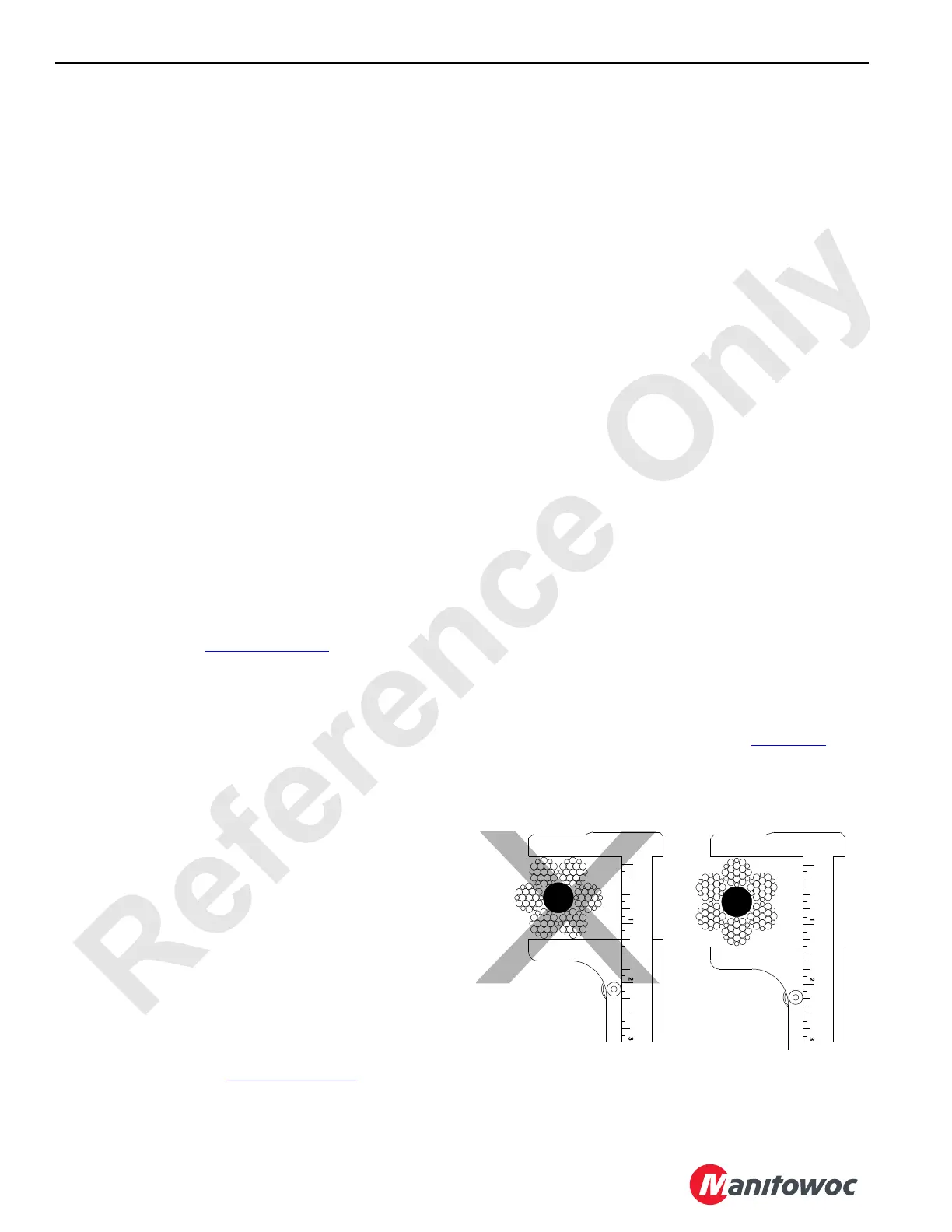HOISTS 2250 SERVICE/MAINTENANCE MANUAL
5-28
Published 07-19-16, Control # 249-01
Inspecting Wire Rope
Frequent Inspection
Visually inspect all running ropes in service once each work
shift and observe the rope during operation. Pay particular
attention to the following areas of the rope where wear and
other damage are likely to occur:
• Pick-up points—Sections of wire rope that are
repeatedly stressed during each lift, such as those
sections in contact with sheaves
• End attachments—The point where a fitting is attached
to the wire rope or the point where the wire rope is
attached to the drum
• Abuse points—The point where the wire rope is
subjected to abnormal scuffing and scraping
Inspect all rope that can be reasonably expected to be in use
during operation for obvious damage that poses an
immediate hazard, such as the following:
• Rope distortion such as kinking, crushing, unstranding,
bird caging, main strand displacement, and core
protrusion
Loss of rope diameter and unevenness of the outer
strands indicate that the rope should be replaced.
• Corrosion (clean and lubricate)
• Broken or cut strands
• Broken wires (see Periodic Inspection
)
• Core failure in rotation resistant rope (indicated by lay
lengthening and reduction in diameter)
Periodic Inspection
The periodic inspection interval must be determined by a
qualified inspector and be based on the following factors:
• Expected rope life as indicated by the rope manufacturer
or past experience as determined by a qualified
inspector
• Severity of environment in which the rope is operated
• Size, nature, and frequency of lifts
• The rope’s exposure to shock loading and other abuse
• Rope maintenance practices
The periodic inspection must be performed at least annually.
During the periodic inspection, the entire length of wire rope
must be inspected. Any damage found, including the
following, must be recorded and a determination made as to
whether continued use of the rope is safe:
• All points listed under Frequent Inspection
• Reduction in rope diameter below the nominal diameter
caused by loss of core support, internal or external
corrosion, or wear of the outside wires
• Severely corroded or broken wires at the end
attachments
• Severely corroded, cracked, bent, worn, or improperly
applied end attachments
Inspecting Rope not in Regular Use
Wire rope must be given a complete inspection if it has been
idle for a month or more due to shutdown or storage of the
crane on which the rope is installed. The inspection must be
performed by a qualified inspector looking for the damage
identified under both frequent and periodic inspection.
Replacing Wire Rope
The final decision as to when a wire rope should be replaced
is the responsibility of the qualified inspector. Discovery of
any of the following conditions is sufficient reason for
questioning a wire rope’s safety and for replacing it:
• A reduction in rope diameter
• Broken wires
• Abnormal wear
Wire Rope Diameter
Measure and record the diameter of a new wire rope after
initial loading for comparison with future inspections. A
reduction in rope diameter is often the first outward sign that
the wire rope core is damaged. When a reduction in diameter
is noted, the rope must be removed from service.
Measure the rope’s diameter across the crowns of the
strands so the true diameter is measured (Figure 5-25
).
Wire rope must be taken out of service when the reduction
from its nominal diameter is more than five percent.
FIGURE 5-25
A925
Wrong Right

